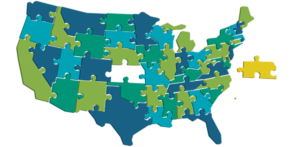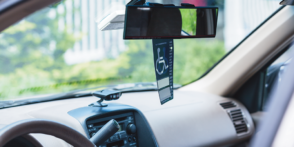Automating Safety
AAMVA Automated Vehicles subcommittee provides technical assistance to North Carolina to help bring a clearer focus to the road ahead
A Tesla was traveling 70 miles per hour at 3:30 a.m. when a highway patrol cruiser came up behind it, flashed its lights and sounded the siren.
There was no response.
Though the officers could see a driver behind the wheel, they surmised he was asleep and the vehicle was being driven by Tesla’s Autopilot.
They passed, moved in front and began slowing maneuvers, which the Tesla sensors detected as traffic ahead. The car was stopped without incident, the driver was awakened and charged with being impaired.
Cathie Curtis, AAMVA’s Director of Vehicle Programs, used this anecdote to highlight the role of law enforcement in the coming automated vehicle revolution during a two-day seminar in Raleigh, North Carolina, in late February.
“I view input from law enforcement as critical for the implementation of autonomous vehicles,” says Tim Peterson, 1st Sgt. of the North Carolina Highway Patrol, who attended the seminar with Lt. Joe Memory. “The AAMVA team did a great job of sharing information and educating the state.”
That was the mission five members of the American Association of Motor Vehicles Administrators Automated Vehicles (AV) subcommittee and one representative from the National Highway Traffic Safety Administration (NHTSA) sought to accomplish at the NHTSA-funded event. North Carolina had applied for technical assistance from AAMVA on AV technology development, testing, permitting, registration, law enforcement and what drivers’ license examinations and manuals can expect to address now and in the future. The jurisdiction was first in what AAMVA hopes will be a long line of those seeking the training.
“We addressed the issues identified on their application,” says Curtis. “They were very interested in distinguishing between the federal government and state roles in regulating AVs. “It used to be that the federal government regulated the technology and the states regulated the driver. But when the equipment and technology becomes the driver, the lines are blurred.”
“It was very valuable to learn the federal process and relate it to how North Carolina’s processes are similar and different,” says Chuck Church, legislative and operations officer of the North Carolina Division of Motor Vehicles. “We both want the same outcome, a safe operating environment, but each takes different pathways to that end.”
To some extent, that’s because state laws regulating automobiles are based on human drivers.
“Until a few years ago, it was science fiction that there wasn’t going to be a human driver,” says Kevin Lacy, North Carolina’s traffic engineer and director of safety. Curtis calls him “the bridge” between the jurisdiction and AV subcommittee, which he recently joined. Lacy had a state role in the seminar, presenting the jurisdiction’s AV initiatives. In December, the state Department of Transportation gave $1 million each to three state universities to study various aspects of AVs. Also, the jurisdiction is testing an AV at North Carolina State University’s Centennial Campus. And North Carolina’s Automated Vehicles Roadmap includes as a goal “benchmark against industry and current federal, state, local and international initiatives.”
The two-day seminar served well in addressing that goal. It included a delineation of AV levels, beginning at Levels 1 and 2, which are based on the degree of automation involved, and moving through Levels 3, 4 and 5, which is a fully automated vehicle.
Levels 1 and 2 include Advanced Driver Assistance Systems (ADAS), such as backup cameras and lane departure warnings. Curtis reminded the seminar attendees that drivers have been taught to use mirrors and look over their shoulder to back up the car. It’s on the test.
But now, Curtis asks, “If the car used in the license examination has a backup camera, should it be part of the test?”
As technology advances, should the test requirements move forward as well?
“This is not a quiz,” Lacy says. “This is game-changing technology for every aspect of our lives. Knowing what the questions are and working out the answers here are the best things we can do right now.”
The seminar was a give-and-take process. AAMVA representatives presented information and went away with a better understanding of information to include in future seminars with other jurisdictions. Some of that came from the University of North Carolina’s Highway Safety Research Center, via a presentation about human factors in relationship to AVs. “What do people actually perceive to be an automated vehicle?” Curtis says. “What do they expect of them? How will they interact with them?”
Another lesson came from the interaction by North Carolina DOT and DMV officials, university researchers, law enforcement and Department of Justice. They are trying to break down silos of information and regulation. Other jurisdictions face the same problem.
“There is a specific need for law enforcement to be engaged in whatever activities the DMV, DOT and universities are engaged in,” Curtis says. “It helps them learn about the technology. And it helps them determine what law enforcement needs to interact with these vehicles or if something happens on the road.”


 A Tesla was traveling 70 miles per hour at 3:30 a.m. when a highway patrol cruiser came up behind it, flashed its lights and sounded the siren.
A Tesla was traveling 70 miles per hour at 3:30 a.m. when a highway patrol cruiser came up behind it, flashed its lights and sounded the siren.

